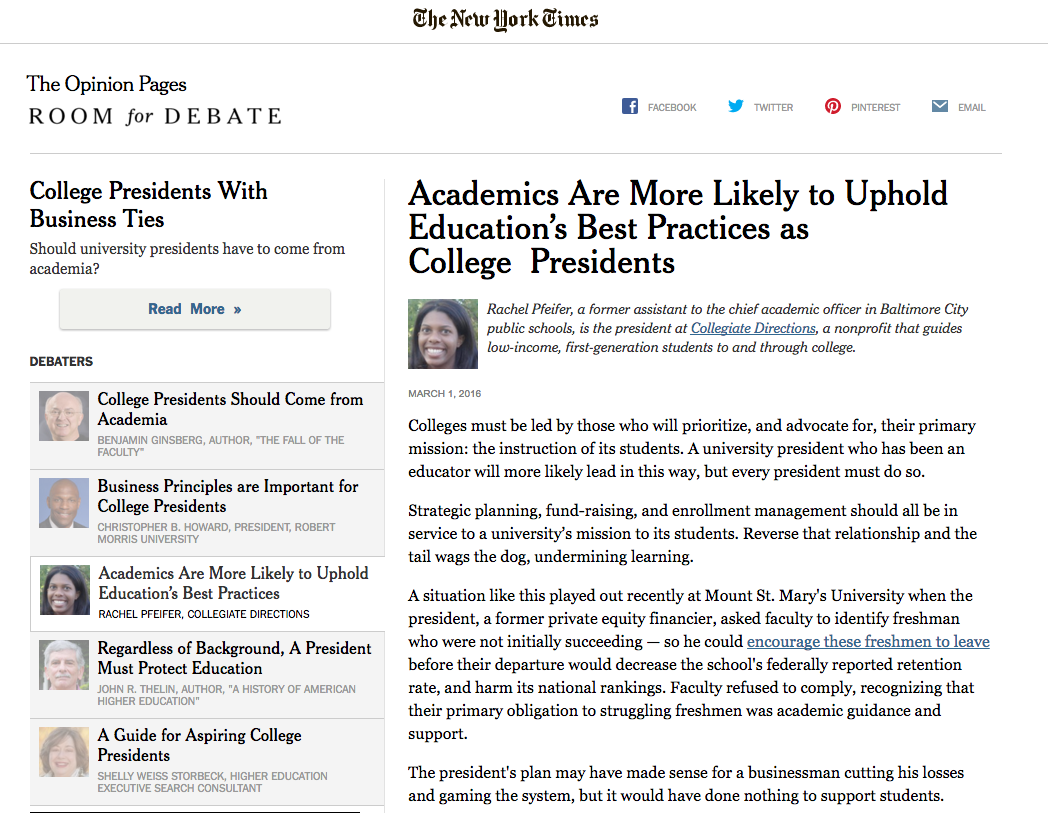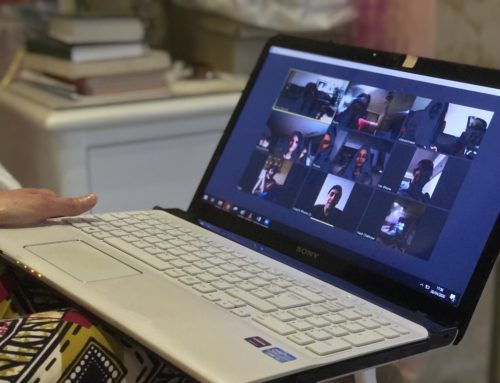 It’s more difficult than ever for nonprofits to get media coverage.
It’s more difficult than ever for nonprofits to get media coverage.
But it’s not impossible — especially if they are willing to do more than pepper news editors with press releases.
As the communications manager for a small education nonprofit in Bethesda, Md., Juliana Avery has sent her share of releases to the media in Washington and Baltimore — with little success.
It’s likely that those announcements by her nonprofit, College Directions Inc., were never even seen by many of their intended recipients. Editors and reporters at newspapers and local television stations are faced with a daily deluge of releases and announcements — and they have smaller staffs and smaller news holes than ever before.
But after changing its approach, CDI quickly started grabbing the attention of editors — and landing some plum placements.
In 2015, her nonprofit, College Directions Inc., was one of 13 Washington-area nonprofits that began an intensive training program at SPIN Academy, which provides strategic communications training to nonprofits.
The training program — funded as part of the Meyer Foundation’s Children and Family Capacity-Building Initiative for Freddie Mac Foundation grantees — gives nonprofit leaders three day-long training sessions on topics like branding, message development, storytelling and media relations.
Each organization also receives 6 months of additional coaching support to help their development and carry out their communications plans.
For Avery, who participated in the training program along with CDI’s President, Rachel Pfeifer, the opportunity to get no-cost guidance from professional communicators has been eye opening.
“We’ve wanted to share our message more widely and for more people to know about us, but we’ve never had much success in getting that message into the media,” she said.
After completing the program, Avery said she and Pfeifer learned that CDI had an opportunity to build its profile, raise awareness — and possibly gain media attention — by injecting its voice into broader conversations about the challenges faced by low-income college students.
SPIN Academy taught them a number of strategies for connecting with the media — one of which focused on having Pfeifer author submitted opinion pieces for newspapers.
In February, when the president of Mount St. Mary’s University in Baltimore made headlines for advocating to have struggling freshmen leave the school to help boost its retention rate, Avery saw an opportunity to put that training to use.
With Avery’s help, Pfeifer penned a piece that challenged the university President’s stance.
The piece was quickly published by The Baltimore Sun. This represented a huge win for CDI — injecting its president’s voice into a high-profile debate that was central to its mission.
But the victories didn’t stop there.
After seeing the Baltimore Sun piece, editors at The New York Times invited Pfeifer to contribute a piece to appear in its Room for Debate feature. In short order, this small charity was suddenly speaking to one of the largest audiences in the US.
“This has been a wonderful experience for CDI,” Avery said. “We are happy to have made our voice heard on an important issue. It has energized our board and supporters, and it has raised the profile of the organization.”
It also helped get results. Facing public pressure, the university’s president has since resigned — and CDI has helped lead a larger discussion about the issues surrounding low-income and first-generation college students.
CDI’s story offers some lessons for nonprofit communicators:
Your opinion matters — No matter your mission, your nonprofit stands for something. Whether it’s health care for the elderly, opportunities for first-generation college students, or protecting the rainforests, your organization is advocating for change. While it’s important to avoid taking overtly political stands, there are issues where you can raise your voice — and get attention. Identify those issues and develop ways to articulate them in writing.
Monitor the news — CDI found a home for its opinion piece because it was able to attach its point of view to a timely issue. Nonprofits that are able to identify news events and topics that relate to their missions — and can quickly provide insight and opinion around those events — stand a much better chance of getting their voices into the media than organizations that send out news releases announcing new programs or fundraising events. CDI was able to capture the attention of editors at The Baltimore Sun because it offered a unique and pointed commentary about a controversy that was happening it its backyard.
Nonprofit communicators need support — Like many small nonprofits, CDI doesn’t have resources to support training for its small communications staff. But when it was provided with an opportunity to get no-cost training, it achieved eye-opening results. Unfortunately, capacity building programs like the one provided through the Meyer Foundation are in short supply. Nonprofits need access to training programs to help them gain the knowledge they need to be more strategic and effective with their communications. As the CDI example shows, small investments can often achieve outsized returns.
Peter Panepento is principal at Panepento Strategies, a full-service content, digital, and social strategy firm for nonprofits and socially-minded companies. He was formerly an assistant managing editor at the The Chronicle of Philanthropy, where he led its transition into digital journalism and social media — a transition that included the creation of some of the nonprofit world’s richest online communities, the launch of a highly profitable webinar series, and the creation of new digital products such as the How America Gives giving database. He also serves as Nonprofit Marketing Guide’s adviser on public relations.





